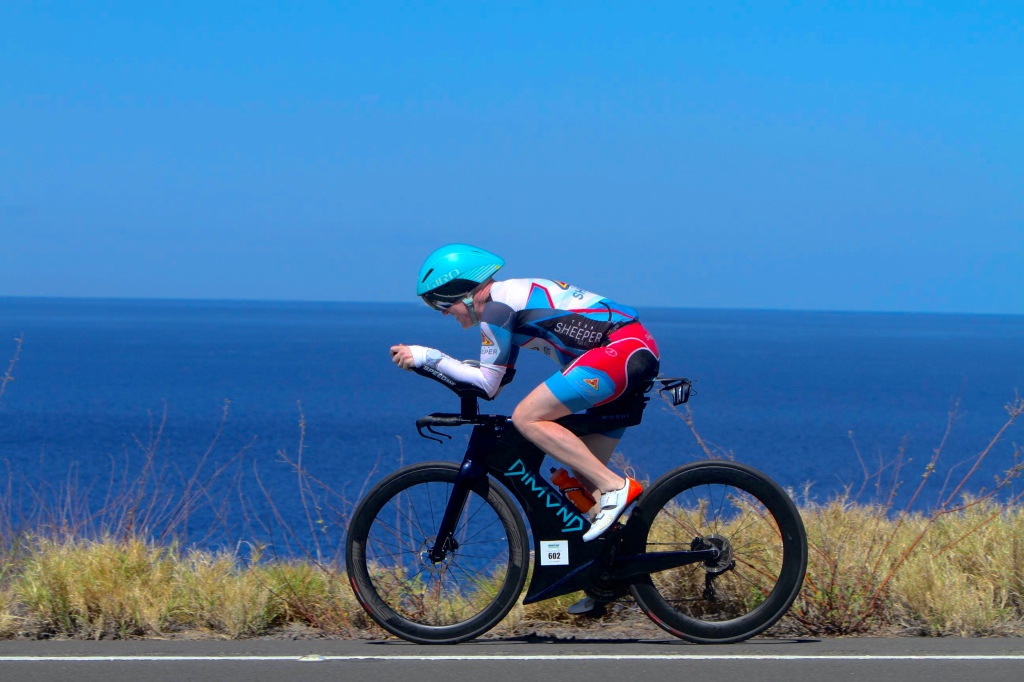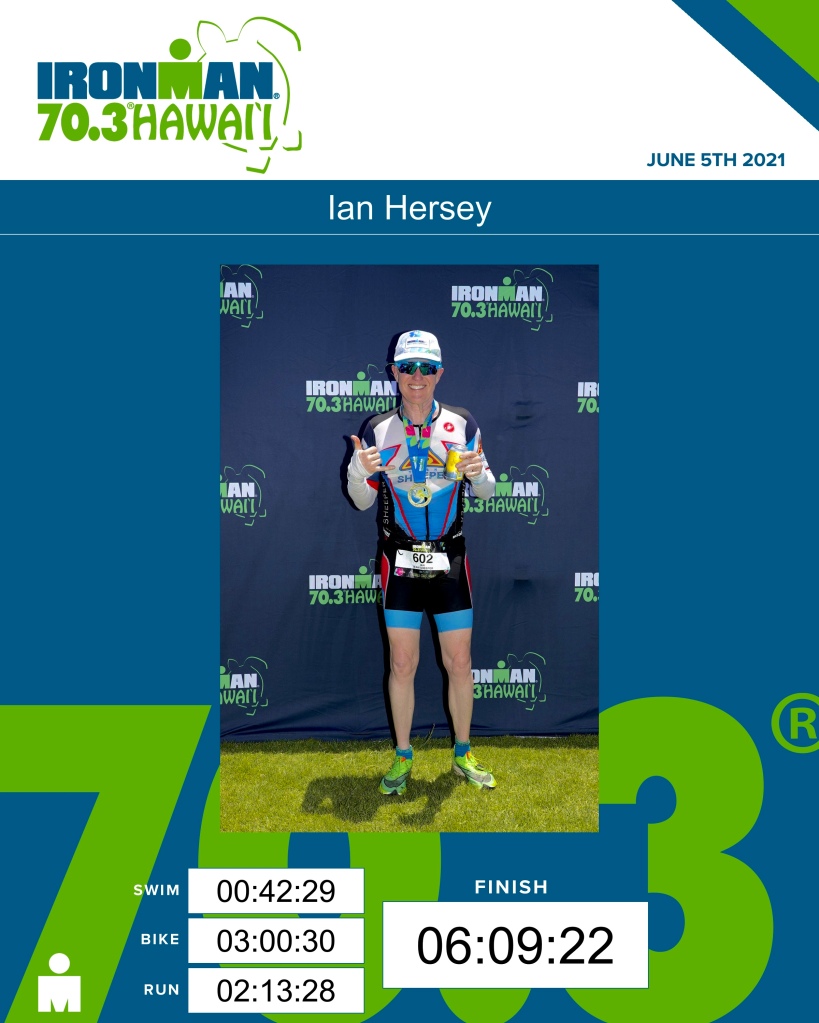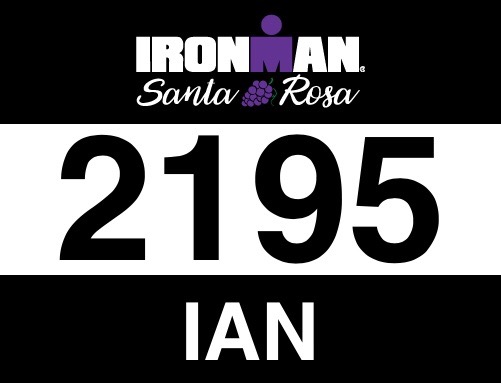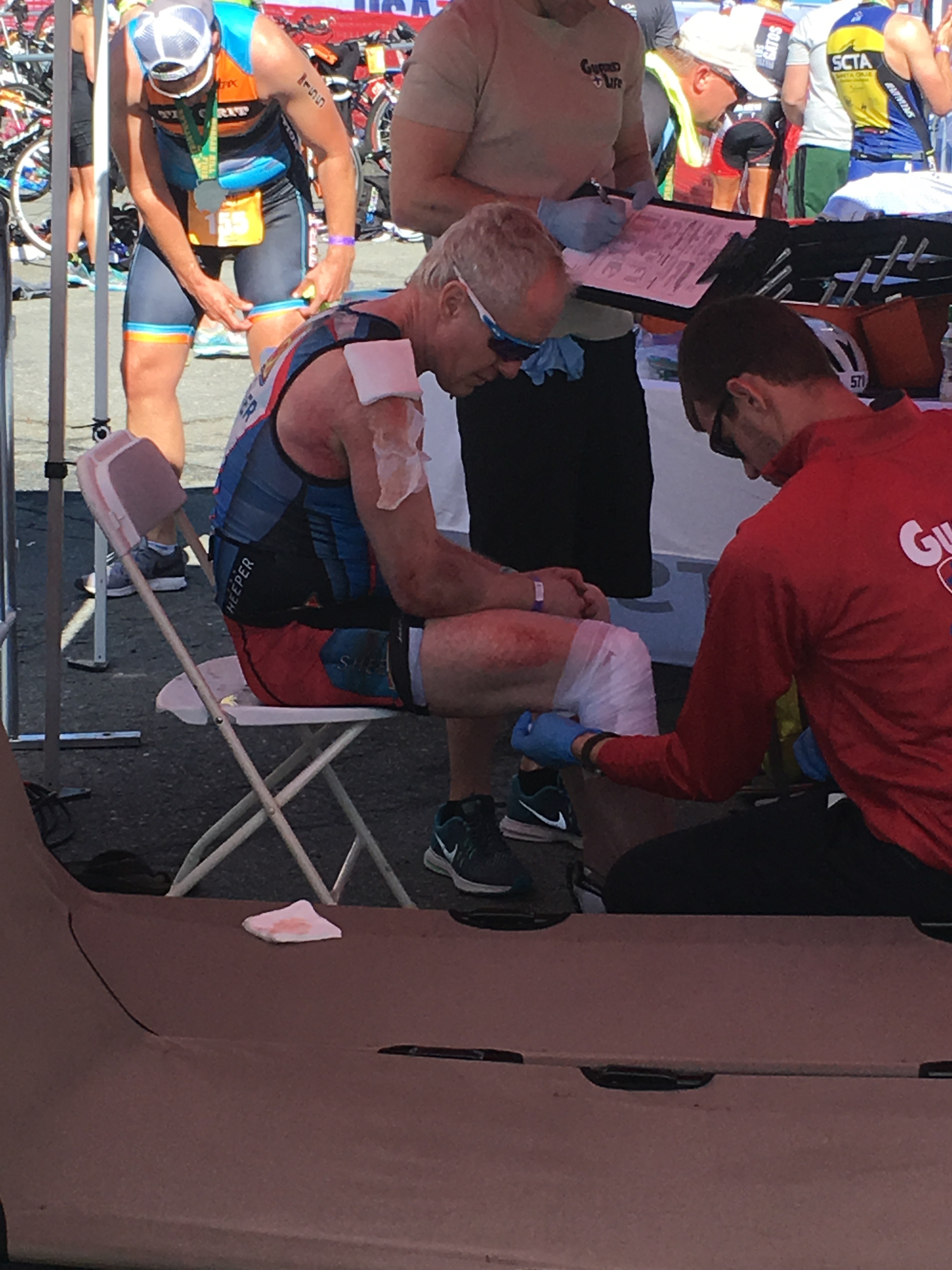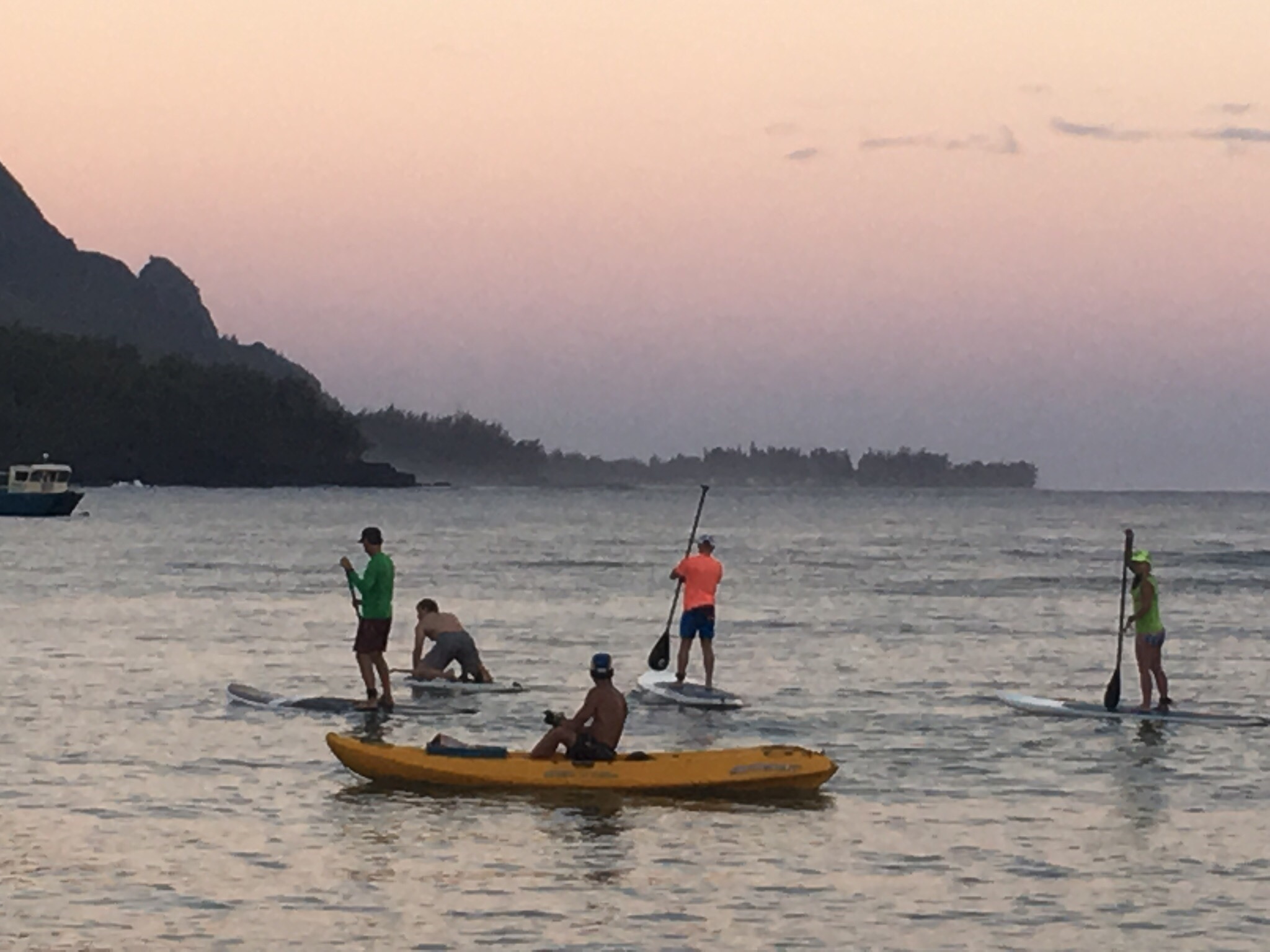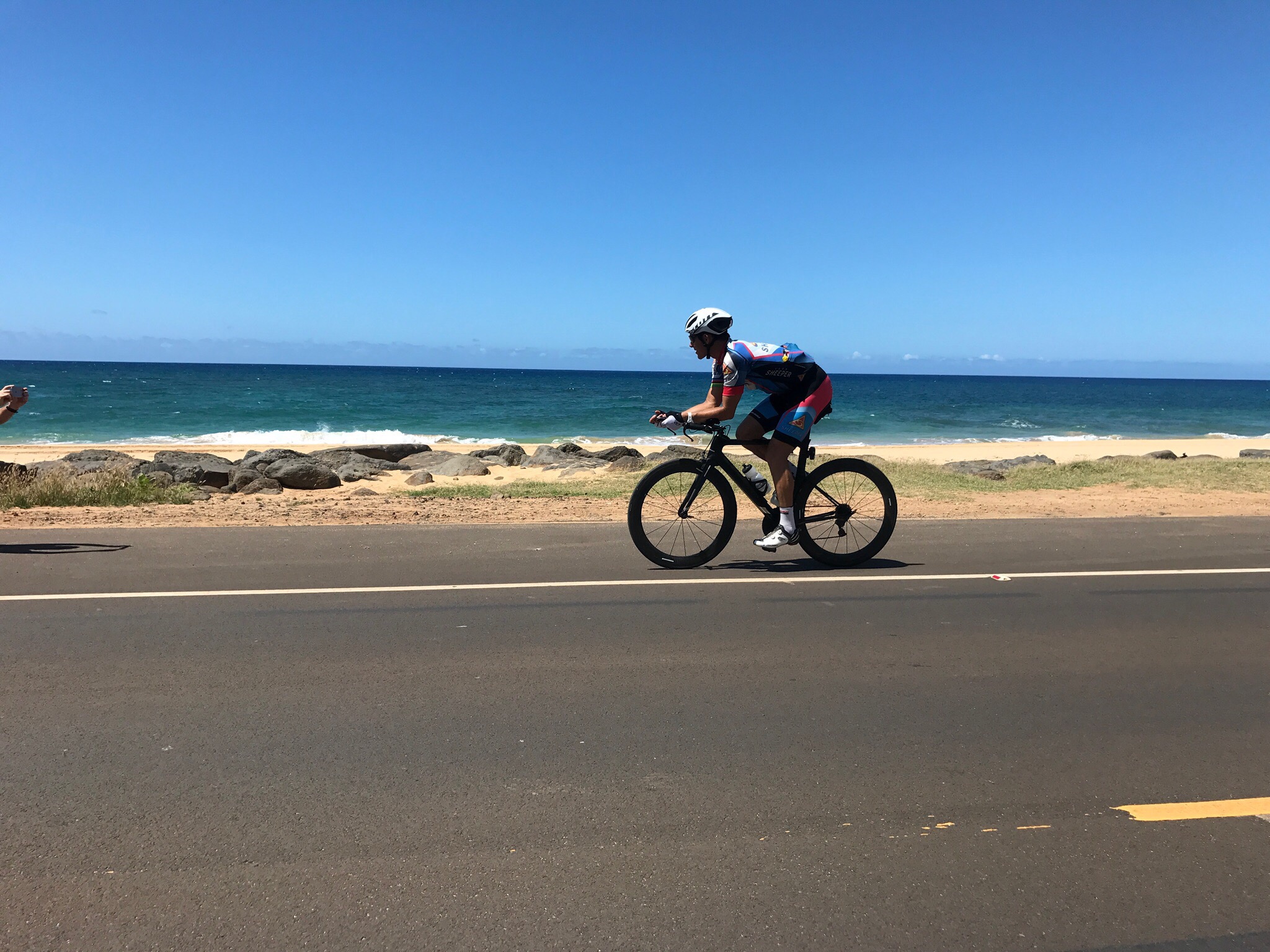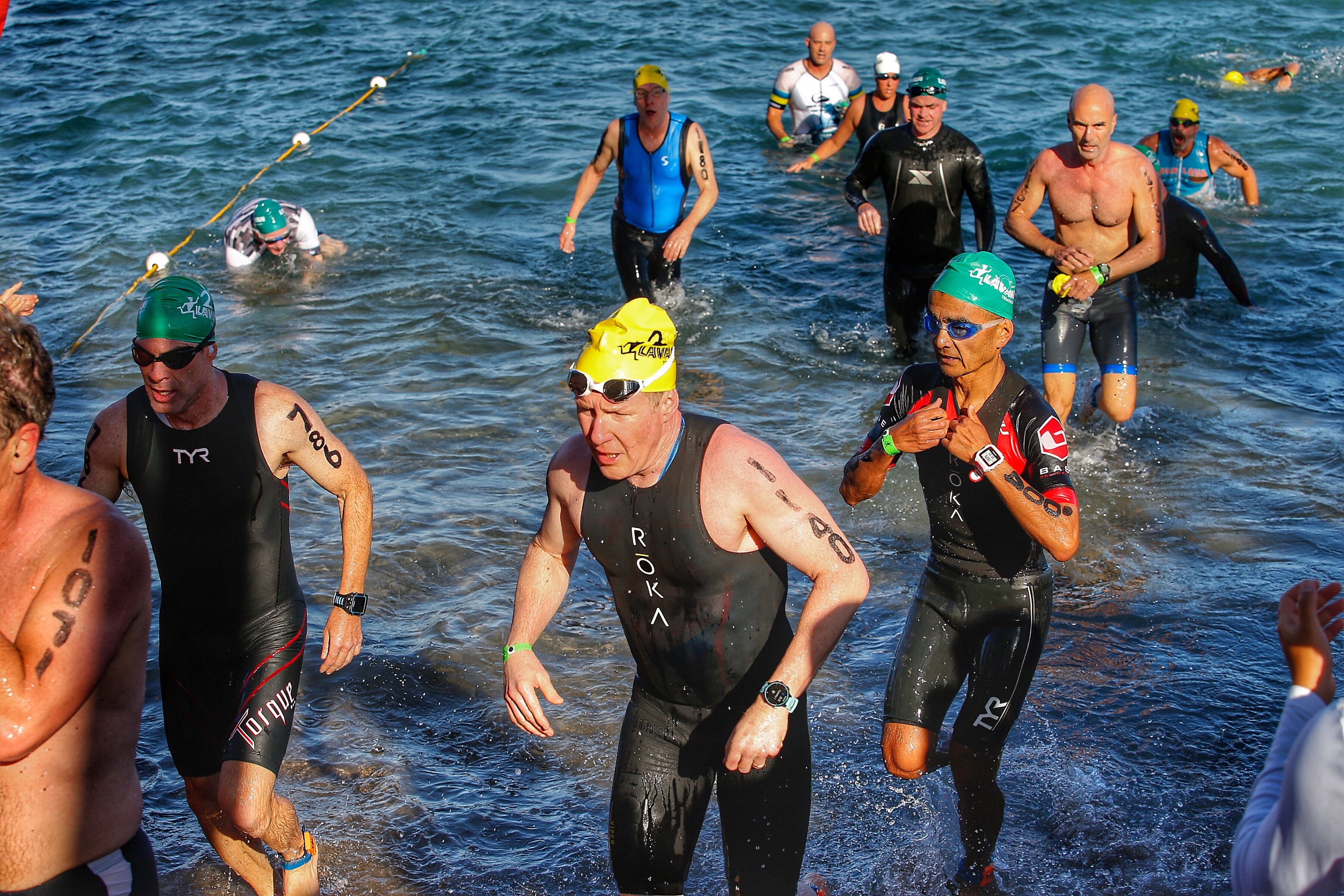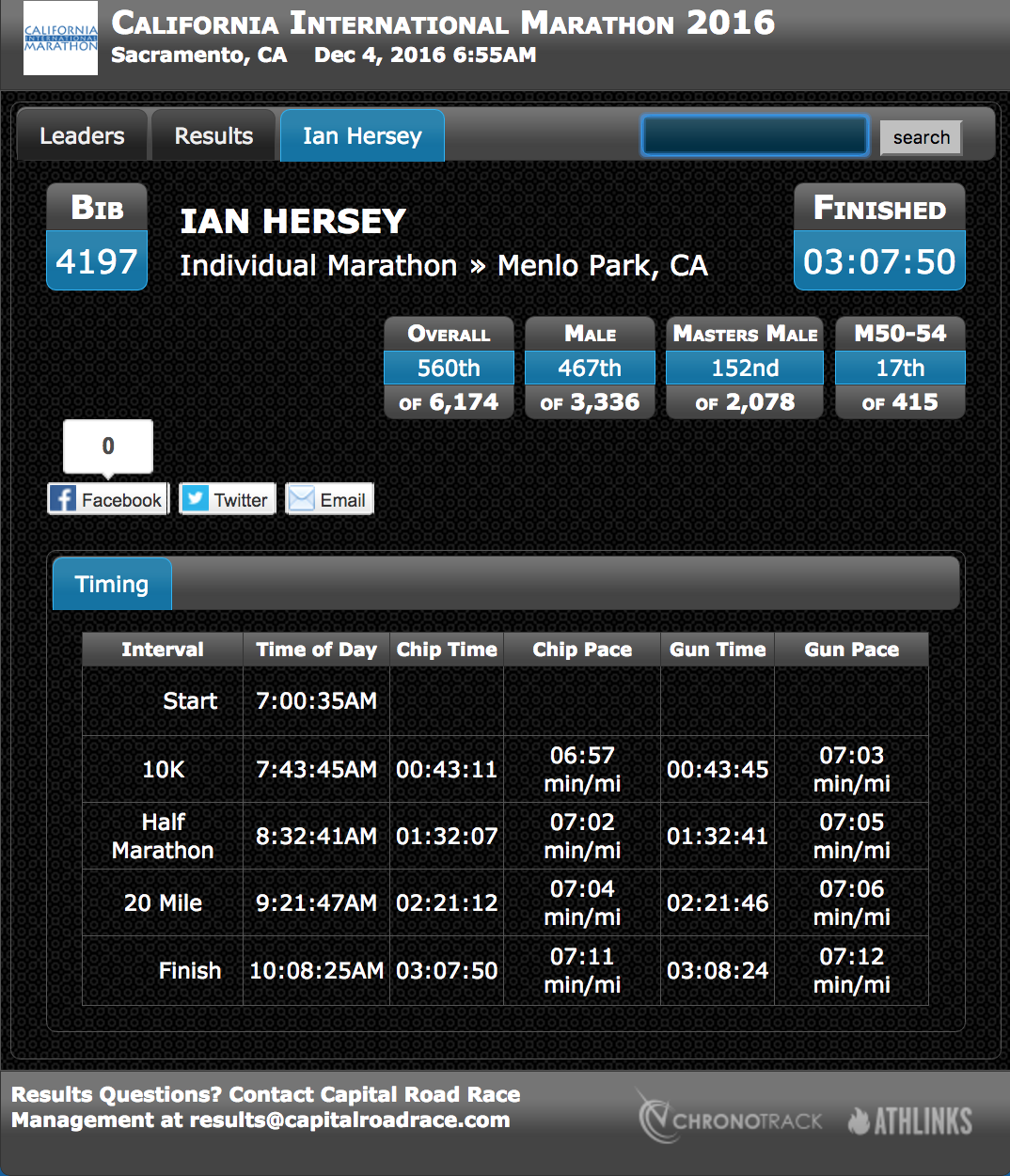Since I’m rehabbing from surgery and not racing, I’m resurrecting some race reports from days gone by. These reports were shared on a listserv-based online group called Dead Runners Society.
Ironman Germany was my third Ironman-distance race, the first being the European Championship in Almere, Netherlands in 1985, and the second being 20 years later in Ironman Germany. I came back to Frankfurt the following year to try and better my time. Enjoy.
They say Ironman is an event that you get better at with experience; this year’s race would certainly put that assertion to the test. Why would a Bay Arean travel all the way to Frankfurt for such a test? Course knowledge might be one reason — I did this same race last year as my second Ironman ever, and my first in 20 years — and it turns out that all my Ironmans have been in Europe (my first was the 1985 European Championship in Holland when I was a young and stupid 23). The long flight aside, though, the logistics are easy: I speak the language, and I get a nonstop SFO-FRA flight followed by a 20-minute taxi ride. Simple.
Another bonus this year was that my brother Neil had just moved to Wiesbaden, a half hour drive from Frankfurt, so to make it a kind of family reunion, I brought my dad over (in addition to my wife Jeanne). To further add to the fun, Jim Cummins and his friend, “the infamous [Tom] Zak,” were racing as well. In fact, Jim and I had a €50 wager on the outcome.
My preparation this year wasn’t ideal, but then it never is. While I have well over 100,000 miles with my butt in an airline seat this year already, my training mileage was down compared to last year. But what you can’t overcome with training, you can make up for with science and money. I got a little coaching on my swim technique, which had me swimming more relaxed, if not exactly faster. For the bike, I worked during the winter on pedaling efficiency using a device called PowerCranks, then got a new tri bike this spring that was more aerodynamic and also had a power meter, a tool to measure the amount of watts one puts out. Power-based training is all the rage among competitive cyclists now; I bought the same system that the newly crowned Tour de France champion Floyd Landis uses. So the only difference is that he actually rides his bike a lot. 🙂
Running of course is my alleged strength in the tri, although I had kind of a mediocre runup to IMG. One 10K in Austin in almost a PW 40:44 (ok, it was hot and humid, but the 40-minute barrier wasn’t something I had seen the other side of since, well, 1981 or something), and then a PW Big Sur Marathon in April in a painful, barely-under-3:10 survival shuffle.
On the other hand, I had a minor bright spot in early June at a half Ironman on the Big Island, in which I had a solid 1:38 half marathon off the bike in hot, humid conditions on a slow course, which at least gave me hopes of running better in Frankfurt than my 4:31 of last year.
So we arrived in Frankfurt five days before the race, and the first challenge was clearly going to be the heat. Germany, like much of Europe, had had a heat wave going on for many weeks, and there was no end in sight. It was getting into the 90s every day, and every day seemed to be slightly hotter than the previous one. Things were made uglier still at Friday’s pre-race briefing — the water in the Langener Waldsee (the swim venue) was so warm that, for the first time ever in any European Ironman, no wetsuits would be allowed. For you non-triathletes, that means less buoyancy in the water, thus more drag and slower swim times. Weaker swimmers are affected by this more than stronger swimmers, so it’s much like a regressive tax. 🙂 The job at hand, therefore, had just gotten tougher.
The evening before the race, we did get some relief in the form of some heavy rain and violent thunderstorms, which cooled things down substantially. I awoke at 4:30 am to catch the bus to the start, and as I walked along the Zeil — the big pedestrian shopping street — there was almost a chill in the air. Almost. It was still probably 70, but it felt cool by comparison. It was weird to see a few people stumbling home drunk or digging through trash cans at that hour juxtaposed with the legion of superfit athletes converging on the bus pickup area.
After a longish 12K bus ride, we were there and setting up in T1. Having dropped off our bikes and gear the afternoon before and then having had the storms, we found things not quite as we had left them. My bike bag had been tied tightly, so none of my stuff had gotten wet, but the guy to the right of me found completely wet socks and was not having a good day.
My slim hope that they would change their minds on the wetsuits after the cooling rain quickly evaporated — the lake temperature was 27C (81F), Hawaii temperature basically. My guts were not behaving well either, probably due to the time change, but one competitor I overheard talking to his friends outside the portajohns kind of summed up my feelings: “ich muss mindestens einmal richtig kakken.” I’ll leave that untranslated, but suffice it to say that eric would not show up when I wanted him to.
So I was swimming in my one-piece trisuit, which I guess affords some hydrodynamic advantage insofar as it covers the pelt on my chest, but mainly it makes for a quicker transition after the swim since I would already be wearing my cycling clothes. It was a deep-water start, which meant treading water for 10 minutes before the gun went off — decidely more difficult than it was with the wetsuit last year. I found an uncrowded spot over to the far left of the wide starting line, hoping to avoid the melee in which I had found myself in the previous edition.
Suddenly we were off, and I found myself immediately in pretty clear water, so no repeat of last year’s panic. I just tried to focus on swimming with long strokes and not kicking too much, just staying relaxed. The swim was two loops — but not the *same* two loops — with a short run along the beach between the loops (called an “Australian exit”). Sighting the course because of this is a little tricky, but I got through the first loop ok, in fact a couple of minutes faster than last year. The trick was they had moved the start line up by 200 meters, so it was not actually faster. The second loop proved that. I stayed relaxed, though, and finally exited in 1:36, a slow swim even for me, and 11 minutes slower than last year. If I was going to hit my number 1 goal of beating last year’s time, I already had my work cut out for me.
T1 was a minute quicker, though, since I didn’t have a wetsuit to peel off, and soon I was off on the carbon fiber machine. Naturally, it was raining again, and it would keep raining through most of the first loop of the two-loop bike course. The two loops didn’t start, though, until after the 12K ride into downtown Frankfurt, and coming over the bridge into town I saw Jeanne and my dad. Since I was somewhat behind my predicted time, I felt compelled to offer up excuses. “I need a wetsuit!” was all I could come up with as I went by.
The plan was to keep an even pace and not push the watts too high — under 200 on the flats and under 300 on the climbs. The bike course is completely closed to traffic — the only Ironman where this is the case — but it does have a few short climbs and some tricky corners through some of the small villages, plus a brutal 500m section of bone-rattling cobblestones through the middle of one village, and these technical sections were made more dangerous because of the rain. In fact, last year’s winner, Normann Stadler, would crash twice on the bike. Water was spraying off of my tires in buckets, and I saw lightening off in the distance several times. So the weather was a blessing and a curse — it kept things relatively cool, but it also meant slower going and, for a number of folks, crashes.
I made it through ok, though, and was averaging about 20 mph — not quite what I hoped but what I could do on the day. I was not very comfortable in the aero position, though, in particular my neck and shoulders, so that’s something I realized I would have to work on more in training. I also had a technical glitch with my Succeed dispensers — they had gotten wet in the rain, and most of my caplets were coagulating into a gooey, salty mess. I forced a number of them down despite that, not wanting to experience a crampfest later.
Towards the end of the first loop, the sun came out and the road was drying, which was good. It was also heating up rapidly, which wasn’t so good. I passed by my cheering section (by then my brother and family had joined Jeanne and my dad) and headed off for the second loop. Roughly 80K (50M) to go.
I was staying pretty well hydrated — the numerous aid stations had bottles of water, Coke, Red Bull and “iso” (pronounced “ee-zoh”), the German generic term for sport drink (it’s short for “isotonisch,” I guess). I had packed several bottle of Cytomax, but once they were done I switched over to iso, which in this case was supplied by PowerBar. All that liquid eventually had to go somewhere, so I pulled over — like many guys on the course did — for a pee break during one of the sections where we were riding along farmland. Not that the German spectators would care if you did it right in front of them — they have quite a different attitude about nudity and bodily functions than we do in the US.
On the last climb, a guy passed me and started chatting in English — it turned out he was a Brit and had seen my first name printed below my number. He told me not to worry — he had just passed me “for show” during the spectator-filled climb and I would re-pass him shortly. I did, but not before joking that “I hear we have a little run coming up”. We both chuckled, but it was a laughter tinged with dread, because a marathon is a long run on a good day. In this heat, and after 112 miles on the bike, it could be a death march.
The last 10K into town is a nice long descent, and I used the opportunity to get out of the saddle and stretch out both legs, plus take on board whatever water and fuel I could get. I finally got into T2 with a bike time of 5:50, 3 minutes better than last year despite the rain and the pee break. So I was still down over last year and would need to have a good run. I exited T2 at 7:34 into the race, which meant I’d have to run 3:25 to break 11 hours. I felt good, but not *that* good.
The run course consisted of four loops of 10.5K each. I thought I would try to run each loop in 55 minutes, which if I could do it would get me a 3:40 and a low 11-hour finish time. The fun — and at the same time depressing — thing about the loop course is that you are running with people who are one, two, or, in the case of the top male pros, *three* loops ahead of you. The way you know who’s on which loop if by the colored armbands you collect during each loop — first blue, then orange, then green, then white. Once you look like Neapolitan ice cream, you get to proceed to the finish.
I was moving well my first loop and was about 5K in when the lead woman passed by on her third loop. Then came the then-lead man, Timo Bracht, on his fourth, though he would be passed by the Kiwi Cameron Brown on his was to a 2:48 marathon. This in 90+ degree heat after averaging over 25 mph on the bike. Unreal.
I got to the end of the first loop in 54:55, and that included my 2:00 or so of T2 time, so I was a little ahead of plan. Unfortunately, maybe *too* ahead of plan, because the wheels were starting to come off. Midway through the second loop, I walked through my first aid station, and that wouldn’t be the last time I walked. My cheering section had staked out a place just past the 1K mark of the loop, and each time they would hand me a Succeed, spray me with sunscreen, and then Neil would jog about 400m with me. That went well until the third loop, where I was walking with Neil, and some dude suddently pushed his way through some other athletes behind us and then elbowed Neil in the back and yelled, in a thick Swabian accent, “Scheisse! Koennt ihr nicht rechts bleiba?! Verdammt!”
Translated, he felt it was his right to shove his way through because Neil wasn’t on the far right side of the path. Except that the guy actually had plenty of room on the left, and this got me so pissed that I went off after him.
I caught him within 400m (amazing how adrenaline will turn a walk into a run), turned to him and said in English “Was that really necessary?” I used English because I wanted him to know that I was a foreigner and to think that he was creating a bad impression of all Germans by his actions. Anyway, it must have worked, because he rather sheepishly said, “No, it’s ok. Sorry.”
Maybe anger can work for you when nothing else does, because if there was one thing I knew at that point, it was that THERE WAS NO WAY IN HELL THE RUDE SWABIAN WAS GOING TO BEAT ME. I didn’t see him again in the third loop, which despite the torrid start I took 1:08 to complete (my second loop was 1:03), and things were definitely tough as I entered the fourth and final loop. I was bound and determined to walk as little as possible, and I actually lasted about 5K before I went through a bad patch again and slowed to a walk.
Just at the point where we picked up the armband for the fourth and final time — in a nice shady area just past the 7K mark (now 38.5K for me) — it happened. The Rude Swabian passed by, in a group of a few other runners. No matter how bad, how empty I felt, that reawakened the tiger — I started running again, passed the Swabian, and picked up the pace. I pushed hard over the last bridge over the Main River, picking off runners right and left, floated down the descent back to the river path and then picked it up even more as I neared the turnoff to the finish, picking off 3 or 4 more guys as I ran up the carpeted ramp to the finish, high-fiving waves of spectators — including my dad, who I recognized at the last minute — to finish in 11:46, an 11-minute improvement over last year in much tougher conditions. The marathon time was 4:11 — 20 minutes better — but I still have a lot of work to do.
As a volunteer escorted me along the chute to get water, Coke, assess my general condition, etc., all of a sudden there was Jim, showered and smiling, resplendent in his finisher’s polo shirt, looking like one of the pros who had finished hours ago. I knew I was €50 poorer, but the way he biked (5:13 vs my 5:50), there was no touching him this day. He earned it, and was gracious enough to spend it on a fat-laden Hessian meal with us in Sachsenhausen the following evening.
All in all, a great trip, and I feel I’m slowly making some progress at this Ironman thing. Whether I’ll do Frankfurt again next year or a different Ironman race is unclear. On the flight home, Jeanne dog-eared all the pages of interest to her in the “Road to Kona” guide that lists qualifiers for Kona. There’s South Africa, Australia, New Zealand, Brazil, Switzerland, … So many choices, so little time.





